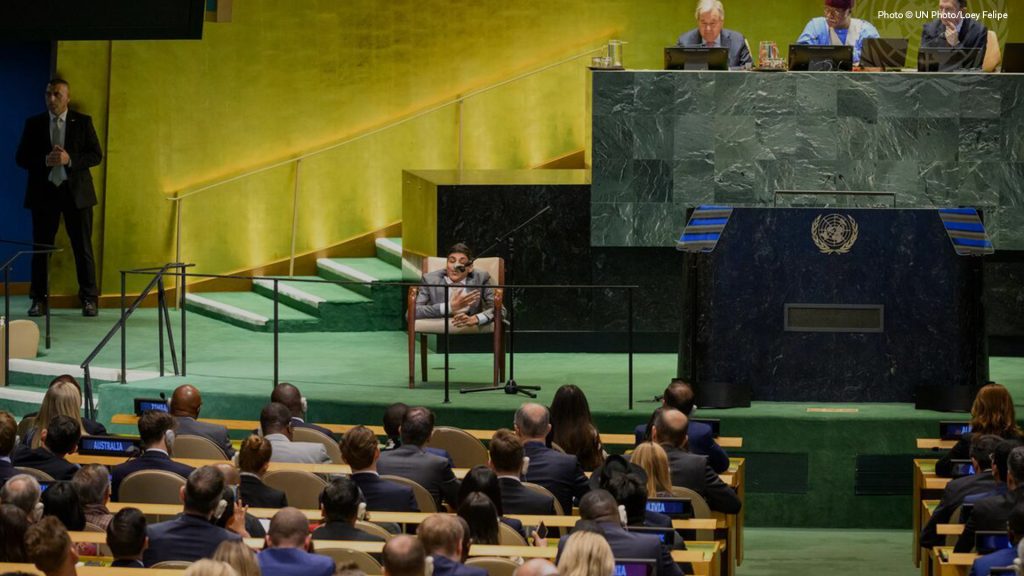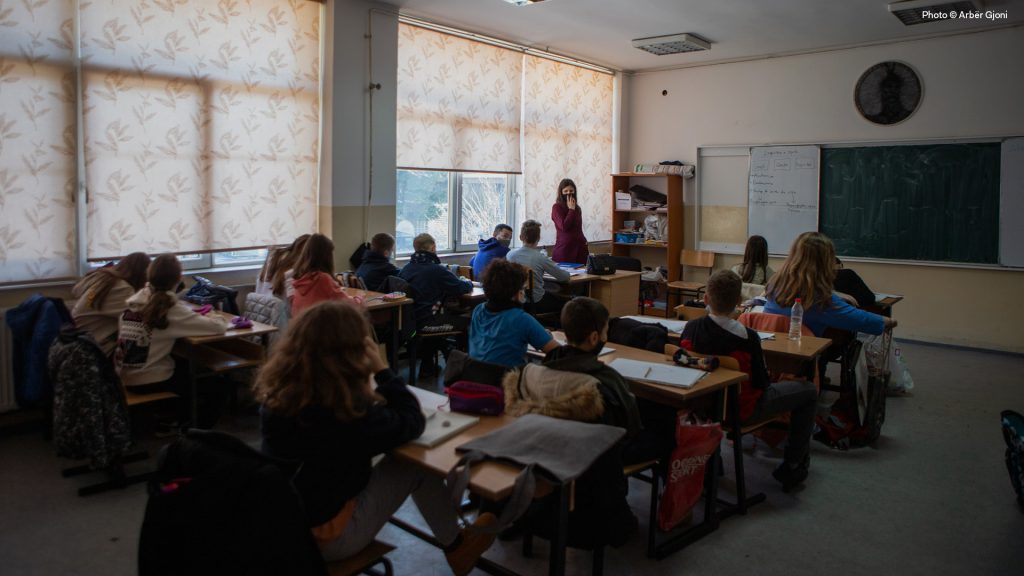The young are a force to be reckoned with. According to the World Youth Report, there are 1.2bn young people aged 15 to 24, accounting for 16 per cent of the global population. This does not include young people aged 25 and above, who are equally motivated to reverse antiquated yet harmful narratives with impeccable and profound perspectives on human rights and peace.
There is no doubt that young people have contributed to the astounding efforts in promoting and protecting human rights and sustainable development in line with the 2030 Agenda for Sustainable Development. Young activists yearn for change for various reasons: feeling or sense of belonging and camaraderie, personal and family experiences of human rights violations, and exposure to higher education and political life, as pinpointed in a report by CIVICUS. Hence, their unique ability to transform, for instance, a simple call to end the grave human rights atrocities in one conflict-ridden country into creative social media campaigns transcending boundaries is immeasurable.
Because of this, UN Secretary-General António Guterres released eleven ‘Our Common Agenda’ (OCA) policy briefs, with the third report catering to the gaps in youth inclusion. These instruments reverberate the need for a global commitment to the Sustainable Development Goals (SDGs). Yet civil society onlookers perceive the implementation of these goals as derailed and sluggish.
Regrettably, young people’s voices are still sidelined and even underutilised in most dialogues at the global level, most recently the UN Summit of the Future (SOTF) held in September this year. This is even though 90 out of 231 unique SDG indicators are pertinent to youth issues. A 2021 report by the Office of the Secretary-General’s Envoy on Youth pointed out that there is no systematically collected data on the threats young people face in civic space. Still confined in the ‘too young to be old, too old to be young’ dilemma, young people do not enjoy the rights enshrined in the Convention on the Rights of the Child (CRC) but are still not regarded as adults by some multilateral actors.
Youth engagement can only be achieved through youth empowerment — and we must look at it through a human rights lens.
Delineating gaps in youth engagement
The third OCA policy brief detailed that young people are almost ‘invisible’ in multilateral policy spaces. We witness frustrated young people on the streets, calling out leaders for ineffective decisions and rampant corruption. In a live poll taken during the SOTF before one of Guterres’ dialogues, youth delegates identified tokenism as a pressing concern regarding their participation in different UN events, an observation coincidentally highlighted in the third policy brief.
For instance, a number of UN agencies and CSOs, even governments, invite hordes of young people to attend their majestic dialogues or forums on youth issues. Yet were young people given adequate platforms or spaces to amplify their thoughts? Are they involved in the conference or trapped for hours in a closed auditorium? Participation and inclusion should go hand in hand. We should advocate for the direct participation of young people in political and public life in accordance with Article 29 of the Universal Declaration of Human Rights (UDHR). Similarly, the UN Security Council Resolution 2250 recognises the contributions of youth in combating violent extremism and promoting positive peace.
The report flagged that existing UN programs lacked systematic and structured resourcing to support youth participation. A few months ago, I stumbled upon an advertisement for the UN Young Leaders Training Programme hosted by the UN Institute for Training and Research. Participants are required to settle the fee using a credit card or bank transfer. These two conditions already disenfranchise young people with limited access to the internet and financial services. Many years back, thousands of young professionals engaged in unpaid internships across several UN agencies, triggered by the exposé of a former intern who slept in a tent while interning at the UN’s Geneva office.
Moreover, the report also cited young people’s frustrations between input and impact. How effective are the follow-up mechanisms or perhaps their monitoring and evaluation frameworks? How can UN bodies or mechanisms assure young people that their suggestions or policy recommendations are thoroughly reviewed and acted upon even before SOTF? There is no doubt that a number of young people, including myself, find the UN system complex and difficult to navigate.
UN Summit of the Future and ‘future leaders’
Youth groups played a crucial role in the dialogues of the SOTF. In this convening, the UN General Assembly adopted a resolution on the Pact for the Future, which adopts 56 actions towards reinforcing global commitments to multilateralism and the SDGs, the Global Digital Compact, and the Declaration on Future Generations.
The Pact for the Future failed to ensure the meaningful participation of young human rights defenders and address the presence of national laws and policies that suppress young human rights defenders and hinder them from participating in formal political processes. The UN’s gruelling ad hoc ‘special accreditation’ procedure for CSOs, as well as limited funding from UN and international donors, led to the exclusion of many young people from the Global South. This is fuelled by the existence of age-discriminatory laws and policies disenfranchising them of their right to education, right to vote and seek candidacy, and labour rights.
Another concern is the deteriorating civic space and the rise of authoritarian regimes. Thousands of young human rights defenders victimised by state-sponsored violence and intimidation have limited knowledge and access to UN mechanisms or are discouraged from reaching out to these international actors. Youth-led organisations stumble upon unprecedented crackdowns from state actors for their unwavering activism. While Action 35 of the Pact precisely promised to ‘promote, protect and respect the human rights of all young people’, there is a need for the UN to re-assess its eligibility criteria and sponsorship guidelines so that young human rights defenders can participate without discrimination and intimidation.
Framing youth engagement as youth empowerment
We cannot achieve the aspirations of the Pact of the Future without highlighting youth empowerment as the outcome of increased youth engagement. In line with Action 37 of the Pact, the UN should incentivise young people to join their ‘coveted’ policy spaces to amplify their voices. The UN should invest in capacity-building for youth-led organisations, including those who lack the resources and networks to materialise their ideas as highlighted in Action 36 of the Pact. The third policy brief suggested establishing the UN Youth Town Hall, cultivating the UN Youth Delegate Programme, and making meaningful participation of youth mandatory in multilateral spaces. If implemented, I believe that we are on the right track in fulfilling the 2030 Agenda for Sustainable Development’s pledge of ‘leaving no one behind’ and the yearnings of the Pact of the Future.
Secondly, the international community must remember that advocating on youth issues is cross-cutting, intersectional, multidisciplinary, multiethnic, multilingual, and multisectoral. Fostering diversity among young leaders in the SOTF and other policy spaces is tantamount to fulfilling their freedom of assembly and association and freedom from discrimination in line with the International Covenant on Civil and Political Rights (ICCPR) and other human rights treaties. Young human rights defenders do not just represent themselves; there are young people who also belong or associate themselves with other marginalised or vulnerable groups. They show solidarity and support the inclusion of other marginalised and vulnerable groups in dialogues. For instance, a young student from an ethnic and religious minority is already part of three vulnerable groups.
We are racing towards a homework ‘deadline’ in 2030. Whether we are finished or unfinished with our homework, we will convene again in the UN Headquarters in New York cramming and palpitating as we deliberate on the next Agenda for Sustainable Development. We should learn from the mistakes of the past and move forward with a more inclusive, peaceful, and human rights-centred agenda for all.
To learn more about the outcomes of the SOTF, please visit this page.
This week we are delighted to publish the first of a number of posts by Gianna Francesca Catolico, the blog’s regional correspondent for Asia Pacific. Upcoming posts by Gianna will examine issues such as conscription in Myanmar and mandatory military training for Filipino youth.
The GCHRP Editorial Team


